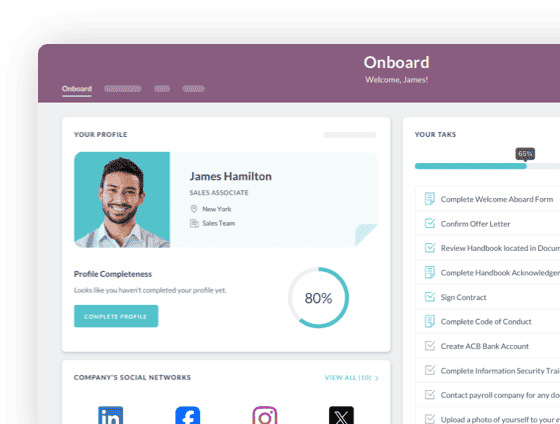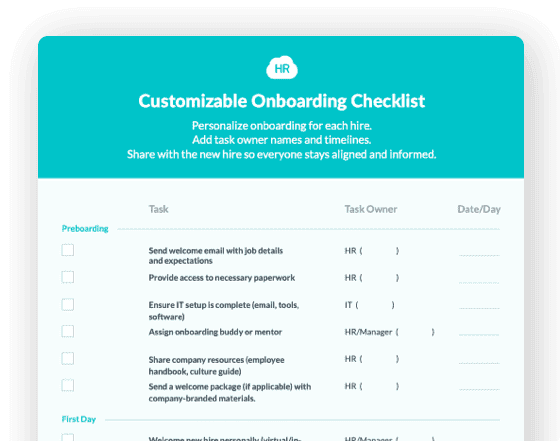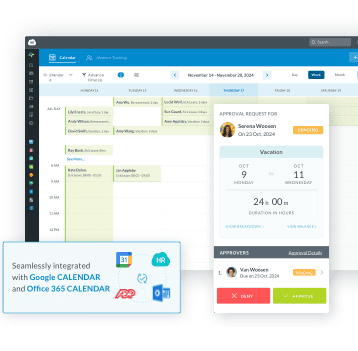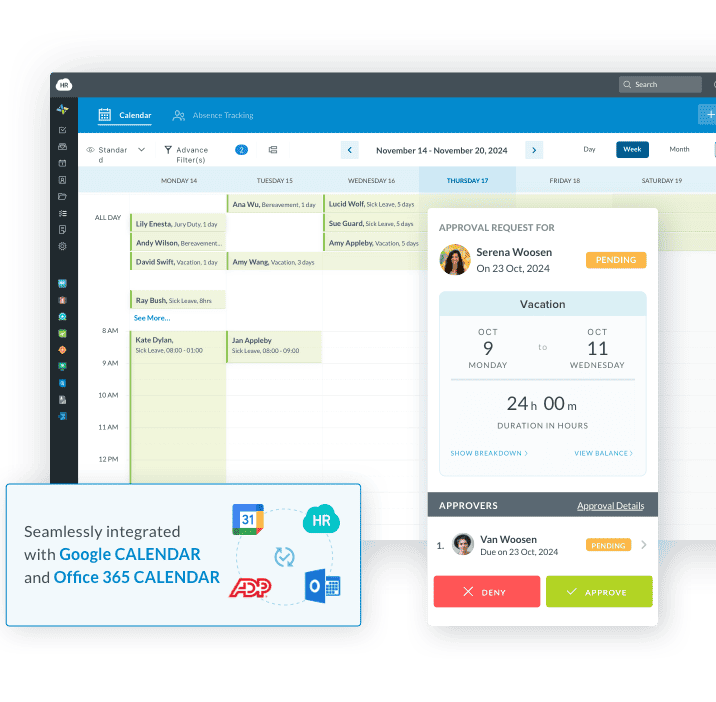Leave Management

 Cut onboarding time
by 60%—here's the
Ultimate Checklist
that helped do it.
Cut onboarding time
by 60%—here's the
Ultimate Checklist
that helped do it.

Leave management is how a company handles and tracks employee time off. This includes things like vacation, sick days, and parental leave. It is a key part of human resources (HR) work. Good leave management makes sure the company follows labor laws and keeps things running smoothly. It also supports employee well-being. A strong system automates tasks and provides a clear, fair process. When a business handles time off correctly, it builds trust and improves morale. This boosts productivity and helps you keep top talent. Simply put, managing leave is a strategic business function, not just an administrative task.
Key Takeaways for Effective Leave Management
Understanding the main ideas of leave management helps you build a strong and supportive workplace. These points show why it is so important for business success.
Compliance and Risk Mitigation:
Proper leave management is key for following complex local, state, and federal laws. This includes rules like the Family and Medical Leave Act (FMLA). Not following these laws can lead to expensive penalties and a damaged reputation.
Operational Continuity:
A clear process for requesting and approving time off makes sure key jobs are always covered. This prevents problems with projects and daily work. When managers can see team schedules, they can plan resources better.
Employee Engagement and Retention:
A transparent and fair leave policy shows that you care about your employees. According to a Gallup poll, companies with highly engaged workers are more profitable. Good leave policies can greatly help with this engagement. This also helps you keep employees for longer.
Administrative Efficiency:
Using technology to automate leave requests, approvals, and tracking saves HR and payroll teams a lot of time. This lets them focus on more important work instead of manual data entry. An automated system also reduces human error.
Data-Driven Decisions:
A modern leave management system gives you valuable data and reports. Businesses can look at trends, such as busy leave times or reasons for time off. This information helps them improve policies and staffing. To learn more, explore the value of a comprehensive HR platform.
Manual vs. Automated Leave Management
Choosing the right system to manage employee leave is a key business choice. The table below compares the old, manual way with a new, automated one. This comparison can help leaders understand why moving to an automated system is often the best choice.
|
Feature |
Manual Leave Management (e.g., Spreadsheets, Paper Forms) |
Automated Leave Management (e.g., HR Software) |
|
Accuracy |
Prone to human error, like wrong numbers or lost forms. |
Very accurate due to automated math and a single source of truth. |
|
Efficiency |
Takes a lot of time for employees, managers, and HR to submit and approve requests. |
Fast and easy for everyone; requests can be done in minutes. |
|
Visibility |
Limited and often outdated view of who is on leave and when. |
Dashboards provide a clear, instant look at everyone's availability. |
|
Compliance |
Requires you to manually track laws, which increases risk. |
Built-in rules and alerts help you follow complex leave regulations. |
|
Cost |
Low starting cost, but high long-term cost from wasted time and mistakes. |
Higher starting cost, but provides a big return on investment by saving time and lowering risk. |
Best Practices for Modern Leave Management
To build a great company, you must follow best practices for managing leave. These tips help make sure your policies are fair, your processes are efficient, and your company remains compliant.
Create a Clear, Easy Policy:
Your leave policy should be easy to understand and available to all employees. It should define different types of leave and how to request it. A good policy prevents confusion and ensures fairness.
Standardize the Process:
Set up a consistent, repeatable process for submitting and approving leave requests. This might be a simple online form or an automated system. Consistency reduces confusion and ensures all requests are handled fairly.
Use an Automated System:
Stop using spreadsheets and paper forms. Invest in HR software that tracks leave automatically. An automated system can handle accruals and different leave types. It saves time and prevents mistakes. Using a centralized system also helps you manage employee records better.
Train Managers and Employees:
Make sure managers understand their role in the approval process and are familiar with the leave policy. Also, teach employees how to properly request time off. Proper training prevents delays and makes sure everyone follows the correct procedure.
Keep Communication Open:
Keep employees informed about their leave balances and the status of their requests. Transparent communication builds trust. It shows that you respect their time and want to support their needs.
Common Pitfalls to Avoid in Leave Management
Even with good intentions, companies can make mistakes that lead to problems. Knowing about these common pitfalls can help you avoid them and build a stronger system.
Ignoring Compliance:
One of the biggest mistakes is not staying up-to-date on federal, state, and local leave laws. Laws change often. What was compliant last year may not be today. This includes everything from the FMLA to paid sick leave.
Relying on Manual Processes:
Using spreadsheets or paper forms is very inefficient. It increases the risk of errors, lost forms, and bad communication. It also makes it almost impossible to get a quick, accurate view of who is on leave.
Having Vague Policies:
A leave policy with unclear language can cause confusion and arguments. If employees do not know the rules, they might take leave incorrectly or feel their requests are unfair. Be specific about the rules and how to get leave approved.
Poor Communication:
Not talking to an employee during an extended leave can cause issues. It is important to have a clear plan for checking in. This helps maintain a connection and makes the return-to-work process smoother. Check out how technology can help with employee communication and more.
Lack of Training:
If managers are not trained on leave policies, they might approve requests that break company rules or deny good requests. This can lead to legal issues and unhappy employees.


Industry Applications of Leave Management
Leave management systems are not just for big companies. They are vital in many industries, each with unique needs. Here are a few examples.
Healthcare:
Hospitals and clinics operate all day, every day. Managing time off for nurses and doctors is very complex. A leave system helps schedule shifts and ensures there are enough staff. It also handles sick leave, vacation, and FMLA requests without disrupting patient care. The system can provide a real-time view of who is on duty, which is critical for safety.
Manufacturing:
In a factory, production lines need a consistent workforce. People being absent can cause costly shutdowns. A leave management system helps managers track absences and plan for coverage. This ensures production goals are met. It can also manage different types of leave, like short-term disability. According to Forbes, efficient operations are a key driver of success in manufacturing, and leave management is a part of this.
Retail:
Retail businesses have many part-time and seasonal employees. They need to manage various schedules and often have a lot of turnover. A leave system makes time-off requests simple for hourly workers. It also tracks sick time and ensures stores are properly staffed during busy seasons like holidays.
A Step-by-Step Implementation Plan
Putting a new leave management system in place requires careful planning. Following these steps ensures a smooth and successful change. This process works for both small and large businesses.
Look at Your Current Needs:
Start by looking at your current leave policies and processes. Find problems like manual errors or a lack of visibility. Know what you need in a new system. This might include automated accruals or mobile access for employees.
Research and Choose a Solution:
Look at different HR software options. Find a system that is easy to use, scalable, and has the features you need. Read reviews and ask for demos.
Set up the System:
Once you have chosen a solution, set it up to match your company's policies. This includes setting up different leave types and approval workflows. This is a key step to make sure the system works the way you need it to.
Integrate with Other Systems:
To get the most efficiency, connect your new leave management system with your payroll and other HR systems. This removes duplicate data entry and ensures leave balances and pay are always correct.
Train Your Team:
Before you go live, train your employees and managers on how to use the new system. Provide clear instructions and resources. For a successful launch, it is important that everyone feels good about using the new technology.
Launch and Watch:
Roll out the new system and tell your team about it. Watch how it performs and ask users for feedback. Be ready to make small changes to make the process better.
Future Outlook and Trends in Leave Management
The world of work is changing fast, and leave management is changing with it. Staying aware of these trends will help your business stay competitive and attractive to top talent.
More Demand for Flexibility:
The traditional 9-to-5 workday is less common now. Employees want more flexible work arrangements, like remote work and flexible hours. Leave policies will need to change. For example, companies might offer unlimited paid time off (PTO). The World Economic Forum has highlighted how flexible work is shaping the future workforce.
Focus on Mental Well-being:
There is more awareness of the importance of mental health. As a result, companies are starting to offer mental health days and sabbaticals. Leave systems will need to track these new types of leave and provide data on their use.
AI and Analytics:
Artificial intelligence (AI) already helps businesses with talent management. In the future, AI will likely look at old leave data to guess when employees will take time off. This will let managers staff projects ahead of time and prevent problems.
More Integrated HR Systems:
Leave management will become more connected with other HR functions. It will work smoothly with performance management and benefits. This creates a full view of the employee experience and helps automate more processes.
Personalized Leave Policies:
Instead of one-size-fits-all, companies may start to offer more personalized leave packages. An employee might choose a package that gives more family leave or more vacation days. This customization will require complex leave management technology. This approach could be a powerful tool to hire and keep a diverse workforce.
Keep Reading
From Manual to Automated: A Complete Guide to Digitizing Employee Onboarding for Large Organizations
Sarah Chen, Director of HR at a 7,000-employee healthcare organization, starts her Monday
Enterprise HR Software in 2025: Why Traditional Enterprise Platforms Fall Short and What Actually Works
Traditional enterprise human resources software systems promise comprehensive solutions
AI in Onboarding: Complete Guide for 2026
You’ve probably been hearing this multiple times a day — AI is transforming HR. But
Ready to streamline your onboarding process?
Book a demo today and see how HR Cloud can help you create an exceptional experience for your new employees.

